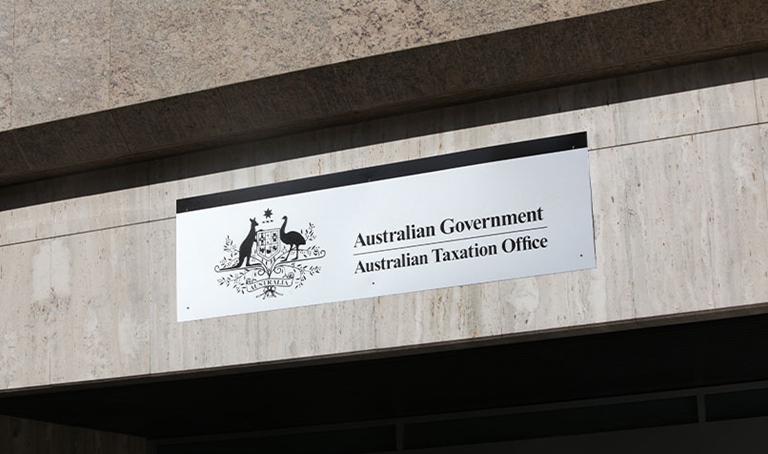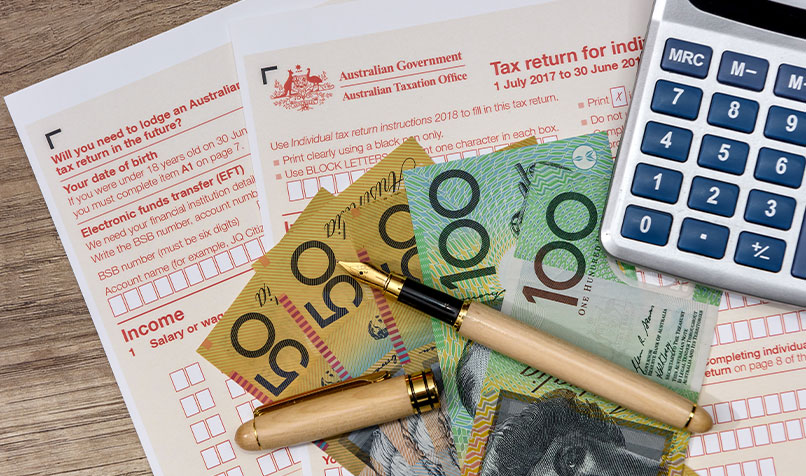Loading component...
At a glance
- The term “shadow economy” refers to undeclared economic activity, where tax is not collected on income.
- In Australia, numbers suggest that about A$33 billion in tax is not collected annually due to the shadow economy.
- Three types of shadow economy activity exist: criminals intent on tax evasion, small business owners who omit income deliberately, and small business owners who make errors.
Dealing with the shadow economy is like plugging holes in a dam wall, says Dr Michael Schaper, co-chair of the Shadow Economy Advisory Forum.
No sooner is one hole plugged than another hole appears in another section of wall.
There are always people, he says, who will do whatever it takes to avoid paying tax, and they are creative and entrepreneurial in their methods.

The rise of cryptocurrencies, for instance, has created a new world of opportunity. While high taxes on tobacco products might deter smokers, they also offer an attractive margin for tax evasion.
Other leaks are sprung inadvertently, largely from small businesses and sole traders who do not understand the systems, and for whom compliance is just too hard. For this group, a big part of the solution is for the government to make it easier for them to do the right thing.
“In the big picture, the research shows that if you’ve got a well-regulated and well-policed, largely corruption-free economy, then you’re probably best placed to deal with the issue,” says Schaper.
Following the money

To use the dam analogy again, the good news is that the dam wall has been increasingly fortified in recent years.
The move to digital and traceable payments, combined with regulatory measures such as Single Touch Payroll and momentum for electronic invoicing, has encouraged compliance among small businesses and reduced the opportunity for leaks. Cash is the shadow economy’s big opportunity, and the percentage of cash payments has fallen from 40 per cent in 2007 to about 25 per cent today.
“What we find is that people move out of the shadow economy when they find the cost of trying to avoid the regulators is too high, or just too difficult,” says Schaper.
Australia’s understanding of the shadow economy has grown considerably since the Black Economy Taskforce reported to the government back in October 2017.
That report observed that the size of Australia’s black economy may have increased by up to 50 per cent between 2012 and 2017, and that it could be as much as 3 per cent of GDP, or about A$50 billion.
"We can now reconcile payments to your contractors, and we check what the contractors are returning in their tax returns. In 2020-2021, this provided visibility on A$368 billion in payments from 170,000 businesses using over 950,000 contractors."
Since then, the approach and the name have changed, as have methods of calculation. The most recent analysis by the Australian Taxation Office (ATO) shows that it is missing out on collecting just over A$33 billion in taxes each year – meaning that 7.3 per cent of the national tax is not collected.
Of this tax gap, the ATO estimates that A$11 billion in missing taxes is due to the shadow economy each year, plus A$3 billion in hidden wages.
If accurate, this makes Australia’s shadow economy one of the smallest in the world. A 2018 report from the International Monetary Fund estimated that Bulgaria’s shadow economy accounted for 19.2 per cent of its GDP. In Turkey, Croatia and Romania, it accounts for 17 per cent. According to other reports, Zimbabwe’s shadow economy is the largest – possibly up to 67 per cent of GDP.
Some of these countries are tackling the issue; others are not. Italy, Spain and some European countries, for example, have introduced limits on cash transactions. In Singapore, GST on transactions is reported at the till. In Indonesia, the promotion of digital currencies is a key policy to both enhance liquidity in the system, and also to limit the opportunities for the shadow economy.
Cash incentives

At the ATO, Peter Holt, assistant commissioner shadow economy, explains that the downward revision is caused by categorising missing funds as those that have a tax impact and those that do not.
Counterfeit goods, illegal gambling and illegal drugs do not have a tax consequence, so they are not factored into measuring the shadow economy tax gap.
Holt believes that the size of the shadow economy has stabilised in recent years, but echoes Schaper’s dam wall analogy.
“You push one area of the shadow economy, and it can pop up somewhere else,” he says.
In the current tight labour market, for instance, there are anecdotes that workers are being offered cash incentives to change jobs. Some workers are also asking for cash payments as a condition of staying in or changing jobs.

“But where is the business owner getting the cash from to be able to pay the workers in cash if it’s off the books?” says Holt.
“Previously, some would have been taking cash and not declaring it as income, and sometimes employees are paid cash to avoid tax obligations relating to employment.
“Now we are starting to see a shift from employers and businesses taking cash, to the workers being on the demand side of cash.”
A clearer picture would come from ATM cash withdrawal data, but this data is not yet available. Macro level data from the Reserve Bank of Australia, however, suggests that an increased amount of cash is entering the economy, which may indicate that shadow economy activity is ramping up.
The ATO also accesses data from financial institutions to identify unexplained wealth.
Holt says there are three types of activity in the shadow economy. First are the criminals intent on avoiding tax. To deal with them, the ATO partners with law enforcement authorities on the Serious Financial Crime Task Force.
Next are the small business owners who omit income deliberately. Key sectors there are the building and construction trades, transport and couriers, cafes and restaurants, personal care industries such as hairdressing and nail salons, and home cleaning.
Last are small businesses that simply make mistakes. These last two categories are managed by the ATO’s dedicated shadow economy compliance program.
“It is sometimes difficult to distinguish between a business that’s just not keeping good records because they are time poor and those that are concealing income, but we do make that distinction,” says Holt.
Find out more
Legislative change

Digital tools are part of the answer, because they enable the better reporting of transactions and better record keeping. For businesses trying to do the right thing, this helps their tax compliance but also has a beneficial impact on managing the business. Accountants play a key role in this, both in educating their clients and using their systems to enable better compliance.
Several legislative changes have also helped the ATO in its efforts. Legislation from the previous parliament banning the deletion of sales records without an audit trail has made a difference, as has a second legislative change on the reporting of payments to contractors. This has helped the ATO to better follow the money trail and identify where contractors may be failing to report income.
A third piece of legislation that will come before parliament soon is on the “sharing economy”, so that individuals will be legally required to report any income they receive from platforms such as Airbnb.
"We are starting to see a shift from employers and businesses taking cash, to the workers being on the demand side of cash."
Of these, says Holt, the legislation on contractors has been particularly important in an economy where the percentage of people on PAYG wages is decreasing, and contract work is growing more prevalent.
“We can now reconcile payments to your contractors, and we check what the contractors are returning in their tax returns,” he says.
“In 2020-2021, this provided visibility on A$368 billion in payments from 170,000 businesses using over 950,000 contractors.
“It shows us the supply chain on all those subcontractors and is a very significant shift in giving us the visibility of payments to contractors.”
Beyond legislation, Holt also sees a cultural change in Australian society.
In the past, people might not have used the ATO tip-off line, even if they had valuable information, because they didn’t want to be “dobbers”.
Today, there is greater understanding that people who avoid taxes are receiving an unfair advantage with what is essentially uncompetitive behaviour. The fact that the hotline fielded 43,000 calls last year attests to this.
“I do think community morals can shift and that will reduce the overall shadow economy activity,” says Holt.
“More taxes collected means more money for better services, or [that] governments might actually reduce the tax payable because everyone’s paying their fair share.”
Tip-off line case studies
The Australian Taxation Office’s (ATO) tip-off line receives more than 110 calls each day, and received more than 43,000 in the last financial year. Here are some case studies that resulted from the tips and from the ATO’s internal processes.
An individual came under scrutiny due to their unexplained wealth. On further investigation, it was discovered that they were linked to a trust entity involved with mobile phone retailing, with evidence of significant cash deposits. The individual’s tax agent reported that he was unaware of the accounts into which the cash deposits were made, so the ATO escalated the audit.
From aggregating information from financial institutions, it emerged that many offshore fund transfers had been made to accounts held in the name of the individual under investigation.
There was also the accumulation of significant personal assets, such as property and motor vehicles. The bank accounts of the trust also showed deposits well in excess of what had been reported to the ATO. As a result, an amended assessment was sent to the individual, demanding A$1.05 million in income tax and more than A$210,000 in GST.
A tip-off from a hairdresser warned that a competing business was doing cash jobs on the weekend for “family and friends”. Although GST was still being charged, big discounts were being offered for cash payments. An audit identified that this salon was not declaring this income and was also pocketing the GST they were collecting without declaring it. The business was asked to pay more than A$20,000 in back taxes and was also fined.
ATO systems set off a red flag in the case of a delivery driver operating as a sole trader and contractor. There was a clear disparity between payments the ATO knew had been made by the driver’s clients and what had been declared. His assessments were amended going back three years, and significant fines were also imposed.

